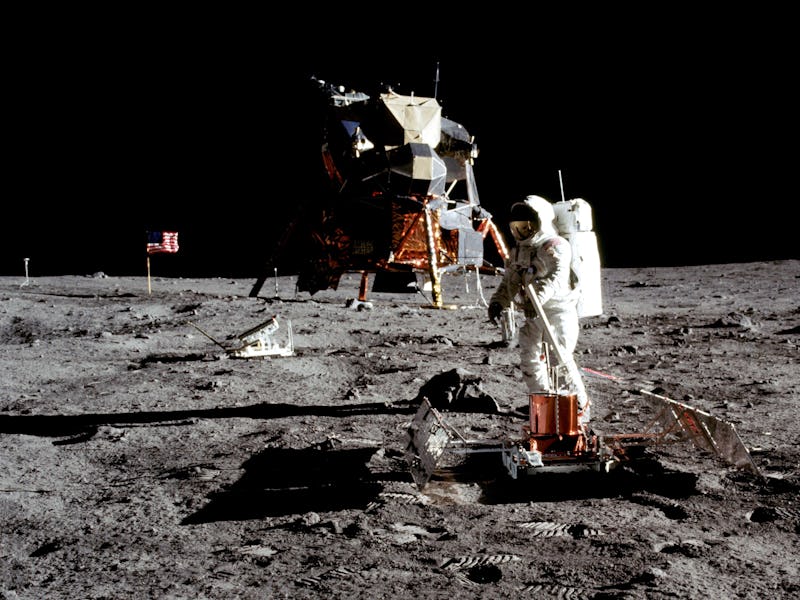NASA has massive moon aspirations over the over the next decade. The space agency released broad plans and even a hype video about its directive to get humans back on the lunar surface, a directive which was signed into action by President Donald Trump in 2017. On February 7, NASA called on the the United States private aerospace industry to assist in the this moon shot.
The agency’s announcement gives big players in the aerospace sector the chance to submit designs for a surface transport vehicle and crafts to ferry astronauts to and from the Lunar Orbital Platform Gateway, which NASA hopes to have mostly constructed by 2024. Lockheed Martin was the first company to confirm with Inverse that it will be participating in the bidding process. A representative from SpaceX declined to comment (Editor’s Note: We also reached out to Boeing, Northrop Grumman, and Blue Origin. We’ll keep a running list of participants at the bottom.)
More people will likely join the race, with “multiple awards” on the table valued between $300,000 to $9 million.
NASA Moon Race: What Needs To Be Built
NASA has laid out plans for three elements to support its “Human Landing System” initiative:
A “Transfer Vehicle” that will take astronauts from the Gateway station to lower lunar orbit.A “Descent” vehicle that will touch down on the Moon’s surface.An “Ascend” element that will take them back to the station.
How the first Descent element will work from the Gateway station.
The space agency has scheduled a Human Landing System Industry Forum on Thursday beginning at 1:30 pm Eastern in Washington, DC at the NASA Headquarters James E. Webb Auditorium. Mission leaders will summarize NASA’s plans to partner with private aerospace companies, host a Q&A session, and lay out a timeframe for the various test missions for the bid winners once they’re built. The event will be live streamed on NASA TV.
NASA Moon Race: When Are Test Missions Scheduled?
NASA has scheduled the first demonstration mission for the descent element in 2024, meaning companies will likely focus on developing this vehicle first. By then, the Gateway station should be mostly finished, at which point tests can begin to identify the best way to get humans onto the lunar surface safely. The winning design will need to show that it is capable of safely landing on the moon.
How the Transfer, Descent, and Ascent elements will work in unison to transport astronauts to and from the lunar surface.
The second demonstration is scheduled for 2026. By then, all three elements would need to be constructed and able to work together to dock and take off from the Gateway. This will be first time a three-part vessel completes a full lap to and from the orbiting moon station.
Finally, the third demonstration mission is set for 2028 and it’ll be the most daunting of the tree. NASA will transfer the crew to and from the ascent element and Gateway, making it the first crewed mission of the bunch.
NASA Moon Race: Who Are the Most Likely Bid Winners?
It’s fair game for any big aerospace firms and seeing as there’s three rewards on the line that could amount to up to $21 million in total, it’s more than likely many of them will step up to the plate.
How the crew aboard the Gateway will use the three-part launch vehicle once it's set up.
Veteran firms like Lockheed Martin, Boeing, and Northrop Grumman might participate but younger companies like SpaceX or Blue Origin also have a big shot at showing up the old-heads.
As it stands, SpaceX and Boeing have both partnered with NASA to develop space capsules to ferry astronauts to the International Space Station. NASA has announced test launch dates for both the Crew Dragon and CST-100 Starliner.
Since both companies have already good relationship with NASA, they’re expected to participate in this bid as well.
NASA Moon Race: Who Is Participating
Lockheed Martin
